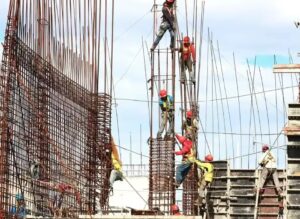Slip and fall accidents often lead to serious injuries and complex legal claims. Understanding what makes a strong case can help victims seeking compensation maximize their chances of obtaining a fair settlement or verdict. This comprehensive guide explores the FAQs of slip and fall cases, including liability factors, types of injuries, and legal standards specific to Texas and Louisiana.
What Is a Slip and Fall Case?
A slip and fall case is a type of personal injury claim in which an individual is injured due to slipping, tripping, or falling on someone else’s property. These incidents typically occur due to hazardous conditions like wet floors, uneven surfaces, or obstacles in walkways. Slip and fall cases fall under premises liability law, which holds property owners responsible for maintaining safe conditions for visitors.
To have a valid case, the injured party must prove that the property owner was negligent in maintaining the premises, that this negligence led to the accident, and that the accident resulted in injuries. Common locations for slip and fall accidents include retail stores, restaurants, construction sites, office buildings, and private residences.
What Elements Are Necessary for a Strong Slip and Fall Claim?
A strong slip and fall claim is distinguished from weaker cases by several factors that clearly demonstrate liability and significant damages. These elements create a compelling case that is more likely to result in a favorable outcome, whether through settlement negotiations or court proceedings. The following factors contribute to the strength of a slip and fall claim:
- Clear negligence: The property owner’s failure to maintain safe conditions is immediately apparent. For example, a store ignoring a large, visible spill for hours despite multiple customer complaints creates a much stronger case than a fall occurring moments after an unnoticed spill.
- Severity of injury: More severe injuries typically result in stronger cases. A slip and fall leading to a traumatic brain injury or multiple fractures generally presents a more compelling claim than one resulting in minor bruising. Severe injuries often involve substantial medical bills, prolonged recovery periods, and significant impacts on quality of life, all of which strengthen the case.
- Overwhelming evidence: A case supported by abundant, clear evidence is inherently stronger. This might include surveillance footage of the incident, multiple eyewitness accounts, detailed incident reports, and thorough medical documentation. In contrast, a case with limited or conflicting evidence is much weaker.
- Minimal contributory negligence: A strong case involves little to no fault on the part of the injured party. For instance, a sober individual carefully walking through a poorly maintained walkway has a stronger claim than someone who was intoxicated or running in a clearly marked hazardous area.
How Does Liability Work in Slip and Fall Cases?
Liability in slip and fall cases centers on the legal concept of negligence. For a property owner to be held liable, it must be proven that they failed to exercise reasonable care in maintaining safe premises. This involves demonstrating that the owner knew or should have known about a dangerous condition and failed to address it adequately.
The determination of liability often depends on the status of the visitor:
- Invitees: Individuals such as customers in a store who are owed the highest duty of care. Property owners must regularly inspect for hazards and either fix them or provide adequate warnings.
- Licensees: People like social guests who are owed a duty to warn about or fix known dangers.
- Trespassers: Those entering property without permission who are generally owed minimal duty, except in cases involving children or known frequent trespassing.
What Is Commercial Property Liability in Slip and Fall Cases?
Commercial property liability refers to the responsibility of business owners or operators to maintain safe conditions for customers and other visitors on their premises. This type of liability is particularly important in slip and fall cases in stores, restaurants, and other businesses.
Key aspects of commercial liability include:
- Heightened duty of care: Businesses typically owe a higher duty of care to their customers than residential property owners do to social guests.
- Regular inspections: Commercial properties are expected to conduct routine safety inspections to identify and address potential hazards.
- Quick response to hazards: Businesses should have procedures in place to quickly address spills, obstacles, and other dangerous conditions.
- Adequate warnings: When hazards cannot be immediately addressed, businesses should set up clear warnings or barriers.
- Employee training: Businesses should train staff to identify and respond to potential slip and fall hazards.
- Insurance coverage: Most commercial properties carry liability insurance to cover slip and fall incidents, which can affect how claims are handled and settled.
In commercial slip and fall cases, attorneys will scrutinize the business’s policies, procedures, and response to potential hazards to determine liability. The establishment of safety protocols and their consistent implementation can significantly impact the outcome of a slip and fall claim against a commercial entity.
How Do Louisiana Standards Affect Slip and Fall Cases?
Louisiana employs a unique “risk-utility balancing test” in slip and fall cases, which is codified in Louisiana Revised Statute 9:2800.6. This statute places a significant burden on the plaintiff to prove the merchant’s liability, which makes it challenging for plaintiffs to succeed in slip and fall cases without strong evidence. Key elements include:
- Burden of proof: The plaintiff must prove that a hazardous condition existed on the merchant’s premises and that it presented an unreasonable risk of harm.
- Actual or constructive notice: The plaintiff must demonstrate that the merchant either created the condition or had actual or constructive notice of the condition before the incident.
- Failure to exercise reasonable care: The plaintiff must show that the merchant failed to exercise reasonable care to address the hazard.
- Comparative fault: Louisiana follows a pure comparative fault system in which the plaintiff’s recovery is reduced by their percentage of fault, if any.
- Temporal element: The length of time the hazard existed is a crucial factor in establishing the merchant’s liability.
What Are Texas Standards for Slip and Fall Claims?
Texas follows a more traditional negligence approach in slip and fall cases but with specific requirements outlined in the Texas Civil Practice and Remedies Code, Chapter 95. Key aspects include:
- Classification of visitors: Texas law distinguishes between invitees, licensees, and trespassers, with different standards of care owed to each.
- Premises liability elements: For invitees, plaintiffs must prove the property owner knew or should have known of the dangerous condition and that the owner failed to exercise reasonable care to reduce or eliminate the risk.
- Open and obvious doctrine: Texas recognizes this doctrine, which can limit liability if the hazard was easily observable to a reasonable person.
- Modified comparative fault: Texas follows a 51% bar rule in which plaintiffs cannot recover any compensation if they are found to be more than 50% at fault.
- Notice requirement: Similar to Louisiana, plaintiffs must prove the property owner had actual or constructive knowledge of the hazardous condition.
- Natural accumulations: Texas law generally does not hold property owners liable for naturally occurring conditions like ice or rain unless the owner exacerbated the hazard.
- Statute of limitations: Texas has a two-year statute of limitations for personal injury claims, including slip and fall cases.
While Texas standards are generally more balanced between plaintiffs and defendants compared to Louisiana, they still require plaintiffs to meet specific criteria to establish liability in slip and fall cases.
What Types of Injuries Commonly Result From Slip and Fall Accidents?
Slip and fall accidents can lead to a wide range of injuries, varying from minor to severe. The most common types of injuries include:
- Fractures: Broken bones, particularly in the wrists, arms, ankles, and hips. Older adults are especially vulnerable to hip fractures.
- Soft tissue injuries: Sprains, strains, and tears in ligaments, tendons, and muscles. These often affect the wrists, knees, and ankles.
- Head injuries: Ranging from mild concussions to severe traumatic brain injuries (TBI). These can occur when the head strikes the ground or an object during the fall.
- Back and spinal cord injuries: Including herniated discs, vertebrae fractures, and in severe cases, partial or complete paralysis.
- Shoulder injuries: Dislocations and other shoulder joint damages are common when trying to break a fall.
- Knee injuries: Including torn ligaments, meniscus injuries, and patellar fractures.
- Cuts and bruises: While often less severe, these can be extensive and may lead to complications if not properly treated.
- Internal injuries: In some cases, falls can cause internal bleeding or organ damage, particularly in high-impact accidents.
- Psychological trauma: Some victims may develop anxiety, depression, or a fear of falling, especially in older adults.
The severity of these injuries can be influenced by factors such as the height of the fall, the surface onto which the person falls, the individual’s age and overall health, and the specific circumstances of the accident.
What Role Does Negligence Play in Slip and Fall Claims?
As in other personal injury lawsuits, victims of a slip and fall accident will need to prove that a third party was negligent to pursue compensation. There are four elements to establishing negligence in a personal injury case:
- Duty of care: The property owner must have owed a duty of care to the injured party. This duty varies based on the visitor’s status (invitee, licensee, or trespasser) and requires the owner to maintain reasonably safe premises.
- Breach of duty: The property owner must have failed to fulfill their duty of care. This could involve not addressing known hazards, failing to conduct regular inspections, or not providing adequate warnings about dangerous conditions.
- Causation: The breach of duty must have directly caused the slip and fall accident. This involves proving that the hazardous condition and not some other intervening factor was the proximate cause of the injury.
- Damages: The slip and fall must have resulted in actual harm or losses to the injured party. This can include physical injuries, medical expenses, lost wages, pain and suffering, and other quantifiable damages.
All four elements need to be proven for a successful slip and fall claim. The plaintiff must demonstrate that the property owner’s negligence directly led to their injuries and subsequent losses, making negligence the fundamental basis for liability in these cases.
How Does Comparative Negligence Affect a Slip and Fall Claim?
Comparative negligence can significantly impact the outcome of a slip and fall claim by affecting both liability and compensation. In cases where the injured party is found to be partially at fault for their accident, their potential recovery may be reduced or even eliminated. For example, if a person slips on a wet floor but was texting while walking, they might be assigned a percentage of fault, which would decrease their compensation proportionately.
There are four main types of comparative negligence systems used across the United States:
- Pure comparative negligence: Plaintiffs can recover damages even if they are 99% at fault, with their award reduced by their fault percentage.
- Modified comparative negligence, 51% bar rule: Plaintiffs can recover if they are 50% or less at fault, with damages reduced accordingly.
- Modified comparative negligence, 50% bar rule: Plaintiffs can only recover if they are less than 50% at fault.
- Contributory negligence: Plaintiffs cannot recover any damages if they are even 1% at fault.
Texas follows the modified comparative negligence system with a 51% bar rule, as outlined in the Texas Civil Practice and Remedies Code, Section 33.001. Louisiana, on the other hand, uses a pure comparative fault system, as per Louisiana Civil Code Article 2323.
What Should Someone Do Immediately After a Slip and Fall Accident?
The moments immediately after a slip and fall accident can have a tremendous impact on the outcome of a personal injury lawsuit, should the injury victim decide to pursue compensation. To maximize personal safety and protect potential legal claims, slip and fall injury victims should:
- Seek medical attention: Prioritize health and safety. Even if injuries seem minor, some may not be immediately apparent.
- Report the incident: Notify the property owner, manager, or supervisor about the accident and make sure an official incident report is filed.
- Document the scene: If possible, take photos or videos of the hazardous condition that caused the fall, including any warning signs.
- Gather witness information: Collect the names and contact details of anyone who saw the accident occur.
- Preserve evidence: Keep the shoes and clothing worn during the fall without washing them.
- Record a personal account: Write down a detailed description of what happened as soon as possible while the memory is fresh.
- Avoid detailed statements: Limit conversations about the incident with the property representatives or their insurers.
- Refuse to sign documents: Do not sign any statements or releases without legal counsel.
- Document injuries: Take photos of visible injuries and keep a journal of symptoms and medical treatments.
- Collect relevant documents: Keep all medical records, incident reports, and any correspondence related to the accident.
- Contact an attorney: Consider consulting a personal injury lawyer to understand legal rights and options.
What Damages Are Available in Slip and Fall Cases?
Those injured in a slip and fall accident due to a third party’s negligence may be able to recover compensation by filing a personal injury lawsuit. The compensation available will depend on the damages involved with the accident, including:
- Economic damages: These are quantifiable financial losses resulting from the accident. They include both current and future medical expenses, lost wages, loss of earning capacity, and costs for rehabilitation or home modifications necessitated by the injury. Economic damages are typically easier to calculate as they are based on actual expenses and projected future costs.
- Non-economic damages: These compensate for intangible losses that don’t have a specific dollar value. They encompass pain and suffering, emotional distress, loss of enjoyment of life, and loss of consortium. Non-economic damages are more subjective and can vary significantly based on the severity of the injury and its impact on the victim’s life.
- Punitive damages: These are granted in uncommon instances in which the defendant’s behavior was especially severe or careless. Punitive damages are meant to punish the wrongdoer and deter similar behavior in the future. They are not available in all jurisdictions and typically require proving a higher level of misconduct than mere negligence.
What Makes Some Slip and Fall Cases More Valuable Than Others?
Not all slip and fall injury victims are able to recover the same amount of compensation. While the severity of the injuries plays a big role in the total compensation amount, there are many factors that can influence the total value of a slip and fall case. Some of the biggest factors are:
- Severity of injuries: Cases involving serious, long-term, or permanent injuries typically result in higher compensation.
- Extent of economic damages: Higher medical bills and greater lost wages generally lead to larger settlements.
- Impact on quality of life: Significant disruptions to daily activities or an inability to enjoy life fully can increase non-economic damages.
- Defendant’s conduct: Egregious negligence or repeated safety violations may warrant punitive damages.
- Plaintiff’s age and occupation: Younger victims or those with high-earning careers may receive larger awards for future losses.
- Pre-existing conditions: Aggravation of prior injuries can complicate cases but sometimes increases their value.
- Jurisdiction: Some venues are known for higher jury awards or more favorable laws for plaintiffs.
Sources





